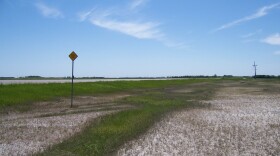Spring is often punctuated by a series of new sights and sounds as winter gives way to summer.
It seems like each new sighting of a bird, for example, is duly noted and announced to others. Sighting the first robin of the season is probably the best example, but don’t forget to pay attention to the many other varied sounds of spring.
Simply seeing those V-shaped flocks of geese in the sky doesn’t begin to compare to hearing the calls of the Canada or snow geese overhead. Bird calls seem to amplify our awareness of the seasonal changes around us.
Other bird calls that often catch our attention include that of the meadowlark, red-winged blackbird, sandhill crane, sharp-tailed grouse on their dancing grounds, or ruffed grouse drumming amongst the aspen.
Those first claps of thunder seem to stop most everyone in their tracks and make them listen more closely for a bit to help confirm or reject the thought that yes, that was thunder. The weather systems are changing. Winter is on the run!
Once the ice comes off area ponds and marshes, there will be a cacophony of croaks, quacks, trills, and chirps emanating from many of them. Those are the calls of frogs and toads. It is the males of the species that are putting on the show to impress the females.
Two of the more common calls are those of the northern leopard frog and the boreal chorus frog. The northern leopard frog’s call is often described as a guttural croaking, while that of the boreal chorus frog is compared to the sound of running a fingernail down the teeth of a good comb.
And for those living near a body of water, the spring turf battle between ice and water may be audible for days, mostly during periods of big temperature swings in the morning and again in the evening.
It is all due to the freezing, and thawing, and re-freezing of the ice. All that expansion and contraction of ice leads to the cracking of ice, sending sound waves reverberating through the water. These sounds are often referred to as “lake thunder.”
So, keep your ears up to the sounds of the season. They are telling you, each in their own way, that winter is on the run and summer will be here soon.





